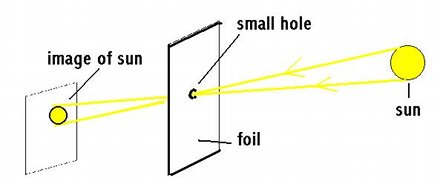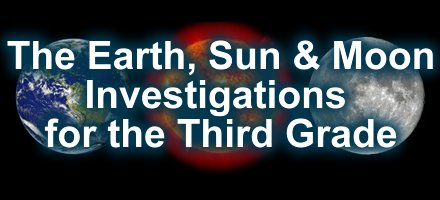
Resources

For All Lessons:
K-6 Astronomy activities from Harvard-Smithsonian Center for Astrophysics’ Everyday Classroom Tools at http://hea-www.harvard.edu/ECT/. Astronomy connections at Stanford’s Solar Center at http://solar-center.stanford.edu/index.html.
Earth, Sun, and Stars Teacher’s Guide by LHS GEMS Lawrence Hall of Science University Of California at Berkeley
Sun Tracking Info (Lesson 1):
Daily Sunrise and Sunset Times can be found at http://aa.usno.navy.mil/data/docs/RS_OneDay.html
Find exact times throughout the world at http://www.timeanddate.com/worldclock/
Light In Space (Lesson 2)
To find the picture of astronaut Piers J. Sellers spacewalking outside the International Space Station in color, go to http://www.nasa.gov/images/content/152331main_s121e06583.jpg).
Many of the NASA’s Moon photos can be found at NASA’s NIX site: http://nix.ksc.nasa.gov/search;jsessionid=7ri1tfhqrd659.
BBC’s Educational website offers activities and assessment for your students: http://www.bbc.co.uk/schools/scienceclips/ages/7_8/light_shadows.shtml.
A wonderful site teaching about what we can learn about an object’s size and shape from its shadows is found at a site teaching about how CAT Scans work:http://www.colorado.edu/physics/2000/tomography/projections.html
Pinhole Viewers (Lesson 3):
Thomas Charles Edison Fund Example Experiments at http://www.charlesedisonfund.org/Experiments/HTMLexperiments/Chapter5/5-Expt6/p1.html.
Arizona Collaborative for Excellence in the Preparation of Teachers’ Pinhole Camera Activity at http://acept.la.asu.edu/PiN/rdg/lightpath/lightpath.shtml
Shadow Tracking (Lesson 4):
Track the Sun’s movement by tracking a stick’s shadow each hour. Much like the Sun tracking groups each hour have a group track the stick’s size, shape and direction each hour.
Check out http://hea-www.harvard.edu/ECT/Stick/stick.html#intro
Sun’s Path in the Southern Hemisphere (Lesson 5):
Challenge you and your students view of the Sun’s path in the Southern Hemisphere at
http://arb.nzcer.org.nz/nzcer3/science/planete/9000-099/Pe9094_flash.html.
Night Sky Constellations (Lesson 6: What’s Up Earth? & Lesson 7: Spinning into Darkness, Spinning into Light):
A helpful site at locating constellations for different times of year is at
http://www.astro.umass.edu/~arny/constel/night_sky_learn.html
Students can draw the constellations and place them next to their birthday drawings in the Earth Orbit Calendar. (see Additional Activities section)
China and Australia Webcams (Lesson 7):
Find live webcams to prove that it truly is midnight near Beijing , China and near Perth, Australia when it is noon in NC at: German School in Shanghai, China http://www.ds-shanghai.org.cn/webcam/webcam.html. Adelaide, Australia http://abc.net.au/adelaide/adelwebcam.htm
Artic Explorers during Polar Night (Lesson 8):
http://www.nationalgeographic.com/adventure/0602/features/north-pole-expedition.html
Seasons (Lesson 9):
Check out the activity and tutorials that are helpful for students and teachers at The Polaris Project at http://www.polaris.iastate.edu/NorthStar/Unit5/unit5_sub2.htm
A helpful resource for you and your students at Windows to the Universe http://www.windows.ucar.edu/tour/link=/the_universe/uts/seasons1.html
Moon Phases (Lesson 10):
Try an interactive moon phases game to sharpen you and your students understanding of the moon phases
http://www.sciencenetlinks.com/interactives/moon/moon_challenge/moon_challenge.html
One of the best web sources for info about the Moon is through NASA’s Navy Observatory at
http://aa.usno.navy.mil/faq/docs/moon_phases.html
Helpful books about our moon:
Why Does the Moon Change Shape?
Isaac Asimov, 1991, Gareth Steven Publishing, ISBN 0836804384
Asimov's book offers a simple description of our Moon's phases with a ball/flashlight demonstration and exceptional lunar photos and paintings. Appropriate for ages 5–10.The Moon Seems to Change
Franklyn M. Branley, 1987, Harper & Row, ISBN 0064450651
In this brief, easy-to-read text Branley presents a complete explanation of how our Moon changes shape. Colorful illustrations and diagrams and a simple experiment augment the text. Intended for ages 4–8.Reaching for the Moon
Buzz Aldrin, HarperCollins, 2005, ISBN 0060554452
Buzz Aldrin, famed Apollo 11 Moonwalker, shares with children ages 7–12 his extraordinary adventures on the Moon, and all the events that led up to that remarkable journey. Colorful illustrations and personal insights from a man who lived the dream, make this an interesting and inspiring read.
Lunar Eclipses (Lesson 12):
Have your kids research beautiful photos, descriptions and explanations of eclipses that scientists have studied at http://www.mreclipse.com/Special/LEprimer.html.
NASA’s great sites with tons of Eclipse info at http://sunearth.gsfc.nasa.gov/eclipse/eclipse.html.

